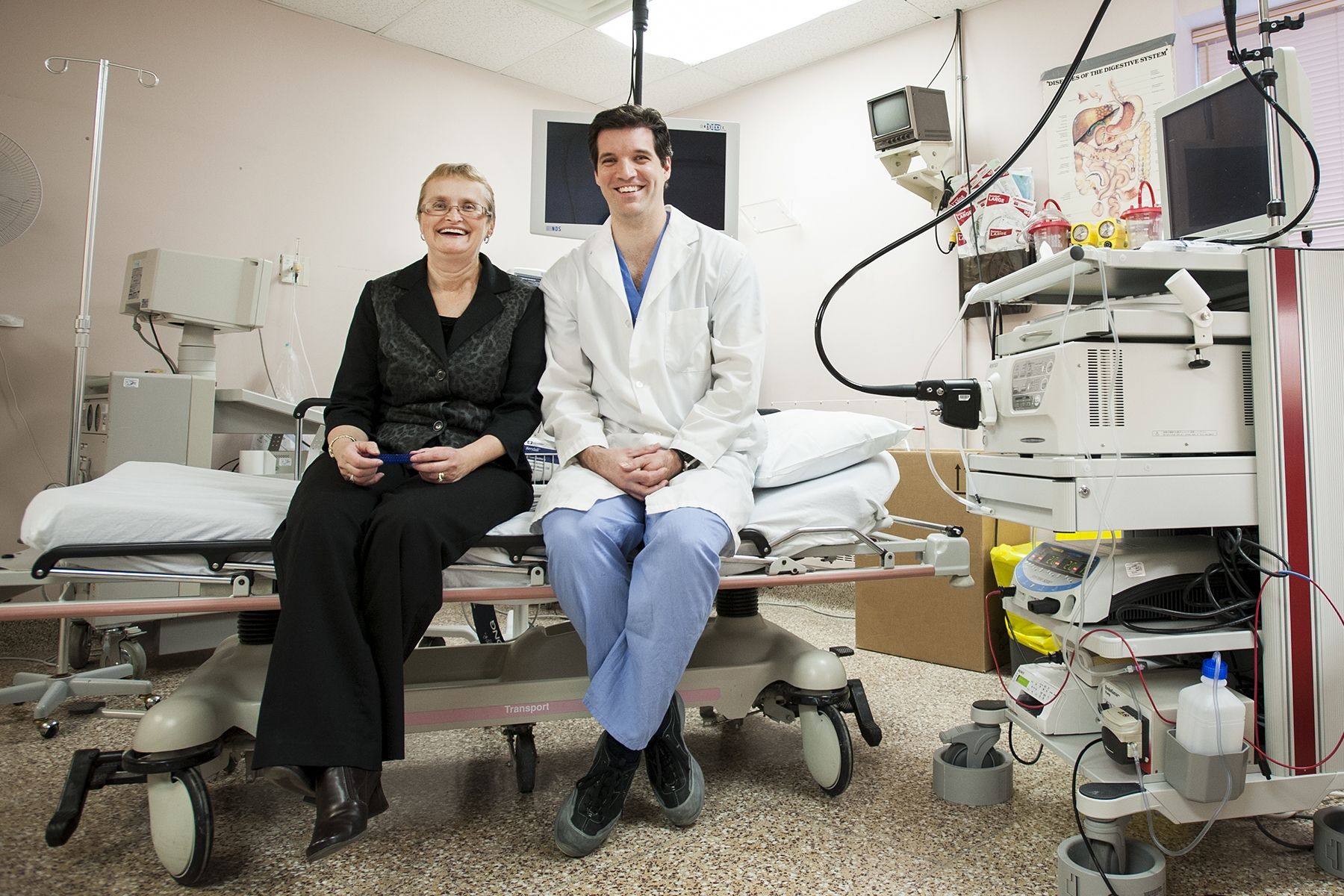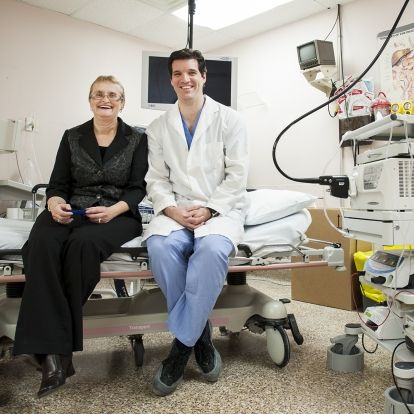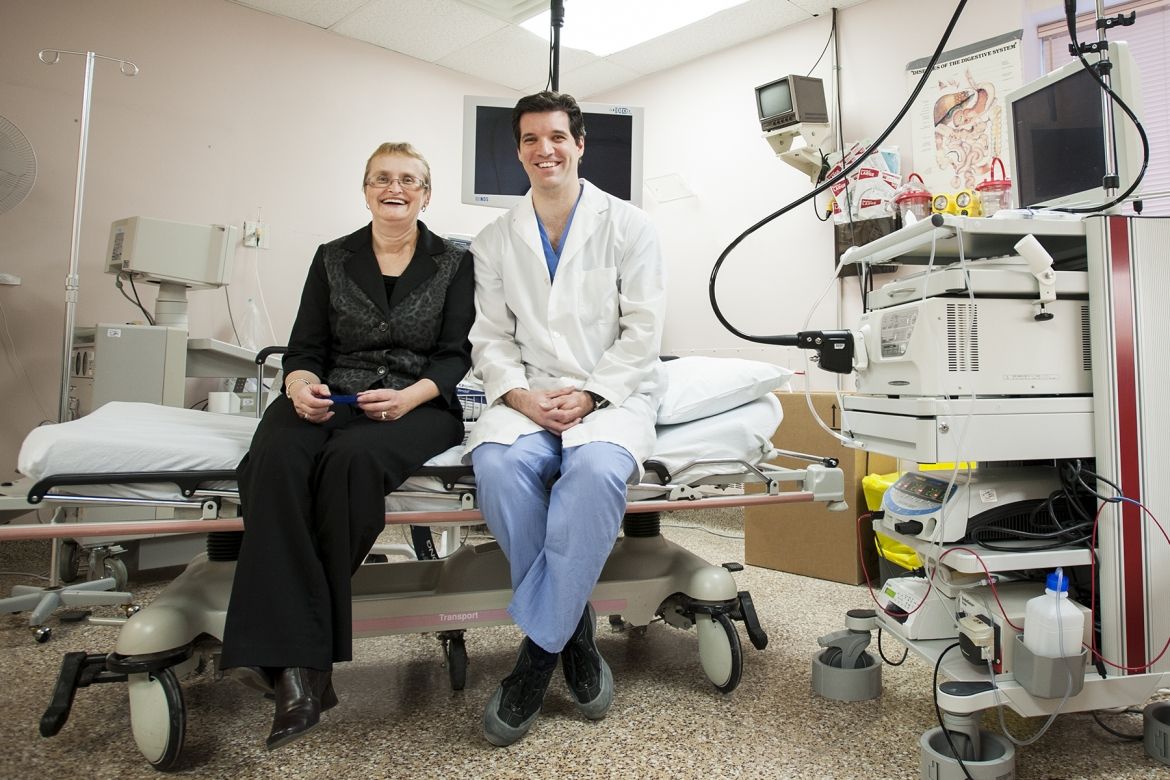Effective immediately masking is required for everyone when present on all inpatient units, in the Emergency Department (ED), the Urgent Care Centre (UCC), and the Children’s Outpatient Centre (COPC).

Last month, 54-year-old Kim McCabe couldn't go more than two weeks without needing to see a physician. McCabe suffers from benign esophageal strictures - otherwise known as non-cancerous narrowing of the throat. It's a condition she's lived with since mistaking a glass of lye (sodium hydroxide) for milk when she was just 22 months old.
"I've spent more time in hospital and had more doctors than people would ever dream," says McCabe who has undergone more than 500 surgeries and hundreds of endoscopies to alleviate the constriction of her throat which, up until now, was no wider than a pencil eraser. "Soup or broth was all I could eat," she says.
Now, that's all changed. This month, McCabe became the first person in North America to receive a biodegradable esophageal stent. The procedure to install the revolutionary mesh tube that holds open the narrowing of the esophagus took place at Kingston General Hospital and was performed by Dr. Lawrence Hookey, Medical Director of the Endoscopy Unit at Hotel Dieu and KGH, along with members of KGH's Endoscopy team. The procedure has widened McCabe's esophagus to approximately 20 mm - the size of a woman's ring.
"We were anxious to find a solution," says Hookey, who has completed 125 endoscopies using the old stent on McCabe over the past four years.
"After each procedure, she'd be able to eat for about a week or so and then she'd have to return to have her throat stretched again. Sometimes the slippery stent would even slide down into her stomach. It just wasn't working terribly well," he says.
Hookey found an alternative with the biodegradable stent, a device currently available only in Europe. "Because the stent is uncovered there's less chance of it slipping," says Hookey. "Plus the fact that it's biodegradable means that it doesn't need to be removed so there will be fewer trips to the hospital for endoscopies."
After getting McCabe on board, Hookey began the application process to Health Canada to acquire the device on a special-access basis. "Everyone at KGH worked hard to make this happen for this patient," says Hookey. With this new device, McCabe should be able to go at least four months between procedures.
"I was nervous going into this," says McCabe. "But it gave me hope to be able to eat and to not feel hungry all the time."
A month after the procedure, McCabe says she's spending less time at the hospital and away from work and is enjoying a better quality of life.
"I'm experimenting with new foods and am enjoying going to restaurants now," says McCabe.
What does it mean to McCabe that her physician worked with her to find the right solution? "I've never had a physician so involved in research and cutting-edge medicine. I'm thankful he looked for a solution for me."
Still, McCabe admits that she is experiencing an unanticipated side effect. "I'm missing the medical staff at Hotel Dieu and KGH. I won't see them as often now."





